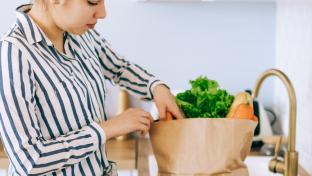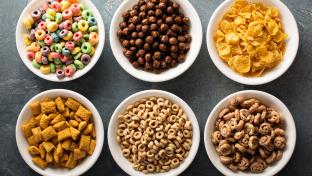What about lunch?
It would be a considerable understatement to say Canadians' consumption habits and needs have shifted over the past year. They’ve shifted dramatically and the data is clear: our shared COVID-19 experience has driven many changes in eating patterns including where we eat, who is present when we eat, and how we are sourcing and planning our meals, not to mention the amount of cooking and shopping we’re doing. Our needs and choices have been altered by our homebound circumstances.
Some of these changes may be shorter term, while others will have staying power beyond the pandemic. One of the most significant changes has been our re-prioritization of meals. Canadians have returned to “three squares a day” or the eating pillars that are, once again, defining our daily routines.
In fact, over the course of the pandemic consumers skipped 8% fewer meals than they did in pre-pandemic times. Breakfast has been a big winner in these new consumer eating patterns, while dinner, of course remains the least-skipped and most prioritized meal of the day.
But what about lunch? What changes have been key to redefining Canadians’ new mid-day meal habits? Here’s what our research is telling us:
DE-PRIORITIZATION OF LUNCH Fewer than two-thirds (60%) of daily respondents in our Ipsos FIVE daily consumption tracking report indicate that lunch is extremely or very important to their daily routines. Compare that rating with the importance they place on dinner, which tracks at more than one in eight Canadians (84%) indicating it is extremely or very important to their daily routine.
FEWER SOCIAL OCCASIONS Undoubtedly, a key contributor to the decline in lunch's importance (-4%) is that we are dining solo more frequently. The “lunch for one” occasion has increased (2.2%) compared to the pre-pandemic period; this is driven by fewer school occasions and more working from home.
DECLINE AT FOODSERVICE Homebound lunch habits have also proven to be challenging for foodservice operators trying to re-ignite traffic. Ipsos’ FSM (Foodservice Monitor) study details sector losses of more than 30% in both sales and traffic over the past year (April 2020 through March 2021). For the first time, the dinner traffic share was higher than at lunch. This dramatic shift was highly influenced, once again, by the work-from-home movement, which negatively impacted urban lunchtime traffic, while delivery and drive-through use positively impacted off-premise dinner traffic results.
DECLINING DEMAND FOR PORTABILITY Key to shifting needs at lunch is the decline of the lunch box. In fact, carried-from-home lunch occasions have dropped by more than 40% versus the pre-pandemic era. Declining demand for portable solutions has negatively impacted eat rates of items such as sandwiches and granola bars (to name just a few).
While convenience, hunger and taste remain point of entry spaces to winning at lunch, targeting needs to unique situations and time of day are also key. The role of both emotional and functional drivers such as comfort, energy, on-hand availability, value and balanced nutrition are all rising in importance.
MORE ASSEMBLY LUNCH AND LEFTOVER LUNCH ITEMS Despite less prioritization of lunch, fewer foodservice occasions and the loss of sandwich relevance, almost 38 million Canadians consume three food and beverage items daily, culminating in a huge dollar opportunity for business.
What Canadians are reaching for to fill the mid-day food gap reflects a vast and varied selection of food and beverage options (cheese, fresh fruit, vegetable dishes, salads, etc.). Successful lunch strategies need to be positioned to unique occasions, with distinct needs and choices such as easy assembly lunch for one, return to school social or leftover value fill.
Though habits, situational dynamics and needs may have evolved over the past year, and with more change to come, there are rekindled or newly discovered behaviours and relationships that have defined a new “lunch love.” These factors serve as a silver lining and it will be key to integrate them into any strategies to win at lunch, particularly as we look ahead to the post-pandemic era.
This article appeared in Canadian Grocer's June/July 2021 issue.





